Publications
Where permitted under publication agreements, I provide a PDF of the publications. Some of these are not the final versions, but instead late stage drafts. Do not quote these, and I recommend reading the published version. Those are available upon request.

Review of Climate Justice and Geoengineering: Ethics and Policy in the Atmospheric Anthropocene
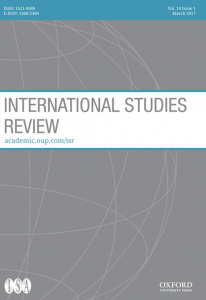
The International Politics of Climate Engineering: A Review and Prospectus for International Relations
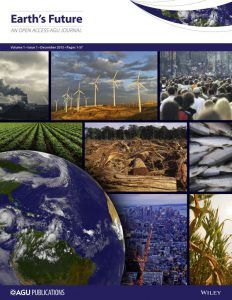
Five Solar Geoengineering Tropes That Have Outstayed Their Welcome
In the last decade, solar geoengineering (solar radiation management, or SRM) has received increasing consideration as a potential means to reduce risks of anthropogenic climate change. Some ideas regarding SRM that have been proposed have receded after being appropriately scrutinized, while others have strengthened through testing and critique. This process has improved the understanding of SRM’s potential and limitations. However, several claims are frequently made in the academic and popular SRM discourses and, despite evidence to the contrary, pose the risk of hardening into accepted facts. Here, in order to foster a more productive and honest debate, we identify, describe, and refute five of the most problematic claims that are unsupported by existing evidence, unlikely to occur, or greatly exaggerated. These are: (A) once started, SRM cannot be stopped; (B) SRM is a right-wing project; (C) SRM would cost only a few billion dollars per year; (D) modeling studies indicate that SRM would disrupt monsoon precipitation; and (E) there is an international prohibition on outdoors research. SRM is a controversial proposed set of technologies that could prove to be very helpful or very harmful, and it warrants vigorous and informed public debate. By highlighting and debunking some persistent but unsupported claims, this paper hopes to bring rigor to such discussions.
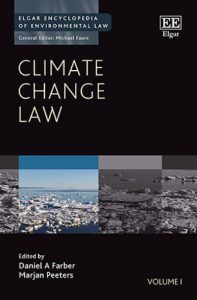
Climate Engineering and International Law
In the face of dire forecasts of climate change and disappointing emissions abatement, some scientists and others are increasingly suggesting and researching intentional, large-scale interventions in natural systems in order to counteract climate change. These ‘climate engineering’ or ‘geoengineering’ proposals presently appear to hold the potential to significantly reduce the risks from climate change, but they also would pose environmental and social risks and would raise numerous legal questions, particularly at the international level. After introducing climate engineering, this chapter suggests why climate engineering is challenging for international environmental law and its scholars, briefly describes applicable international legal instruments and reviews the existing legal scholarship on the international environmental law of climate engineering, with particular attention to proposals for future international regulation. It closes with suggestions for future research.
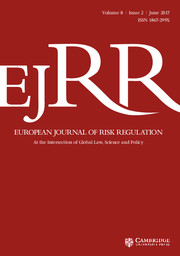
Special Issue on Regulating Climate Engineering in the European Union: Opening Editorial
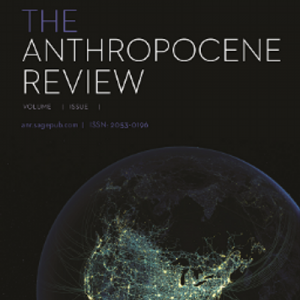
A Critical Examination of the Climate Engineering Moral Hazard and Risk Compensation Concern
The widespread concern that research into and potential implementation of climate engineering would reduce mitigation and adaptation is critically examined. First, empirical evidence of such moral hazard or risk compensation in general is inconclusive, and the empirical evidence to date in the case of climate engineering indicates that the reverse may occur. Second, basic economics of substitutes shows that reducing mitigation in response to climate engineering implementation could provide net benefits to humans and the environment, and that climate engineering might theoretically increase mitigation through strong income effects. Third, existing policies strive to promote other technologies and measures, including climate adaptation, which induce analogous risk-compensating behaviours. If the goal of climate policy is to minimize climate risks, this concern should not be grounds for restricting or prohibiting climate engineering research. Three potential means for this concern to manifest in genuinely deleterious ways, as well as policy options to reduce these effects, are identified.
Published online ahead of print in 2014.

An Economic Analysis of Liability and Compensation for Harm from Large-Scale Solar Climate Engineering Field Research
Solar climate engineering is under increasing consideration as a potential means to reduce climate change risks. Its field research may generate knowledge to reduce climate risks to humans and the environment and will, at a large-enough scale, pose its own risks, some of which will be of the transboundary kind. Liability or compensation for harm is frequently referenced as a possible component of international regulation of solar climate engineering but has been insufficiently developed. This article offers an economic analysis of the possible interrelated roles of rules, liability, and compensation in the future international regulation of large-scale field research in solar climate engineering. Notably, the benefits, risks, and incentives of climate-engineering research are unlike typical high-risk activities. The analysis proposes a hypothetical international agreement that links general and procedural rules for research, an international compensation fund, and limited, indirect state liability with a duty-of-care defence.
Reprinted in Environmental Law and Economics, Klaus Mathis (Ed.), Economic Analysis of Law in European Legal Scholarship series (Springer, 2017).

The International Regulation of Climate Engineering: Lessons from Nuclear Power

Climate Engineering Field Research: The Favorable Setting of International Environmental Law
As forecasts for climate change and its impacts have become more dire, climate engineering proposals have come under increasing consideration and are presently moving toward field trials. This article examines the relevant international environmental law, distinguishing between climate engineering research and deployment. It also emphasizes the climate change context of these proposals and the enabling function of law. Extant international environmental law generally favors such field tests, in large part because, even though field trials may present uncertain risks to humans and the environment, climate engineering may reduce the greater risks of climate change. Notably, this favorable legal setting is present in those multilateral environmental agreements whose subject matter is closest to climate engineering. This favorable legal setting is also, in part, due to several relevant multilateral environmental agreements that encourage scientific research and technological development, along with the fact that climate engineering research is consistent with principles of international environmental law. Existing international law, however, imposes some procedural duties on States who are responsible for climate engineering field research as well as a handful of particular prohibitions and constraints.
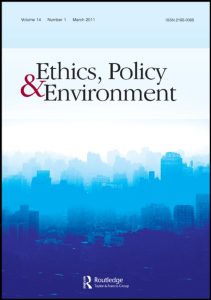
Response to Svoboda and Irvine (Ethical and Technical Challenges in Compensating for Harm Due to Solar Radiation Management Geoengineering)

Climate Engineering Research: A Precautionary Response to Climate Change?
In the face of dire forecasts for anthropogenic climate change, climate engineering is increasingly discussed as a possible additional set of responses to reduce climate change’s threat. These proposals have been controversial, in part because they – like climate change itself – pose uncertain risks to the environment and human well-being. Under these challenging circumstances of potential catastrophe and risk-risk trade-off, it is initially unclear to what extent precaution is applicable. We examine what precaution is and is not, and make a prima facie case that climate engineering may provide means to reduce climate risks. When precaution is applied to the currently pertinent matter of small to moderate scale climate engineering field tests, we conclude that precaution encourages them, despite their potential risks.
Reprinted in Environmental Law and Climate Change, Jonathan Verschuuren (Ed.), The International Library of Law and the Environment series (Edward Elgar, 2015).
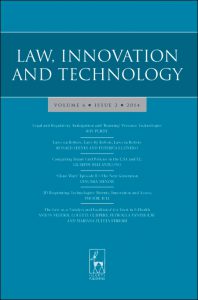
The Regulation of Climate Engineering
Intentional interventions in global physical, chemical, and biological systems on a massive scale are receiving increasing attention in hopes of reducing the threat of anthropogenic climate change. Known as climate engineering, or geoengineering, research is moving forward, but regulation remains inadequate, due in part to significant regulatory challenges. This essay asserts that key to overcoming these regulatory challenges is distinguishing between the two primary forms of climate engineering, and between deployment and research. One of climate engineering’s two primary forms, carbon dioxide removal, can largely be addressed through existing legal instruments. In the case of solar radiation management, the other primary form, focusing initially on research can bypass the geopolitical quagmire of deployment. Two other major challenges to developing regulation for solar radiation management research remain: establishing regulatory legitimacy, and developing an appropriate definition of research. Potential regulatory forms include centralized international legal instruments, fully or partially private transnational networks, and norms developed from the bottom up.
Reprinted in Environmental Law and Climate Change, Jonathan Verschuuren (Ed.), The International Library of Law and the Environment series (Edward Elgar, 2015).
